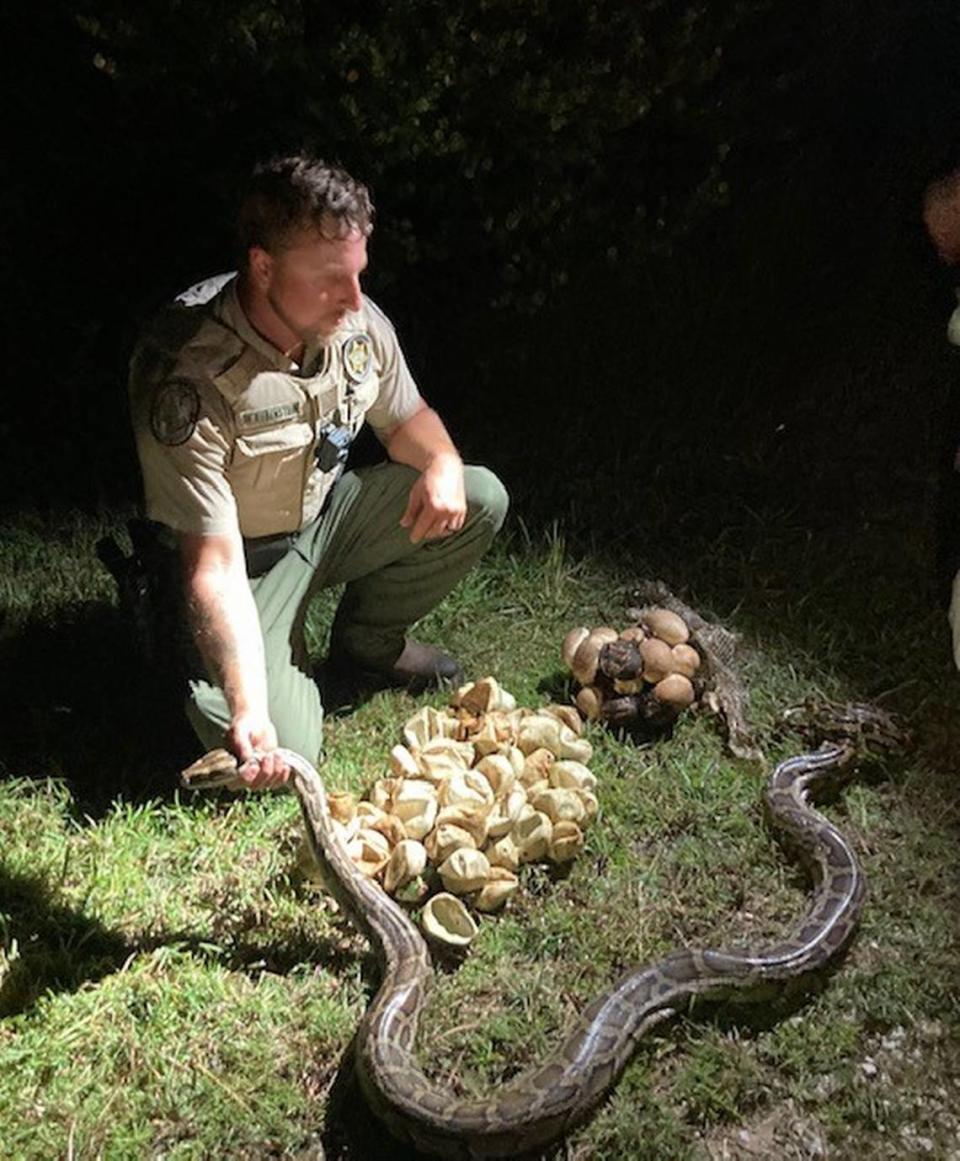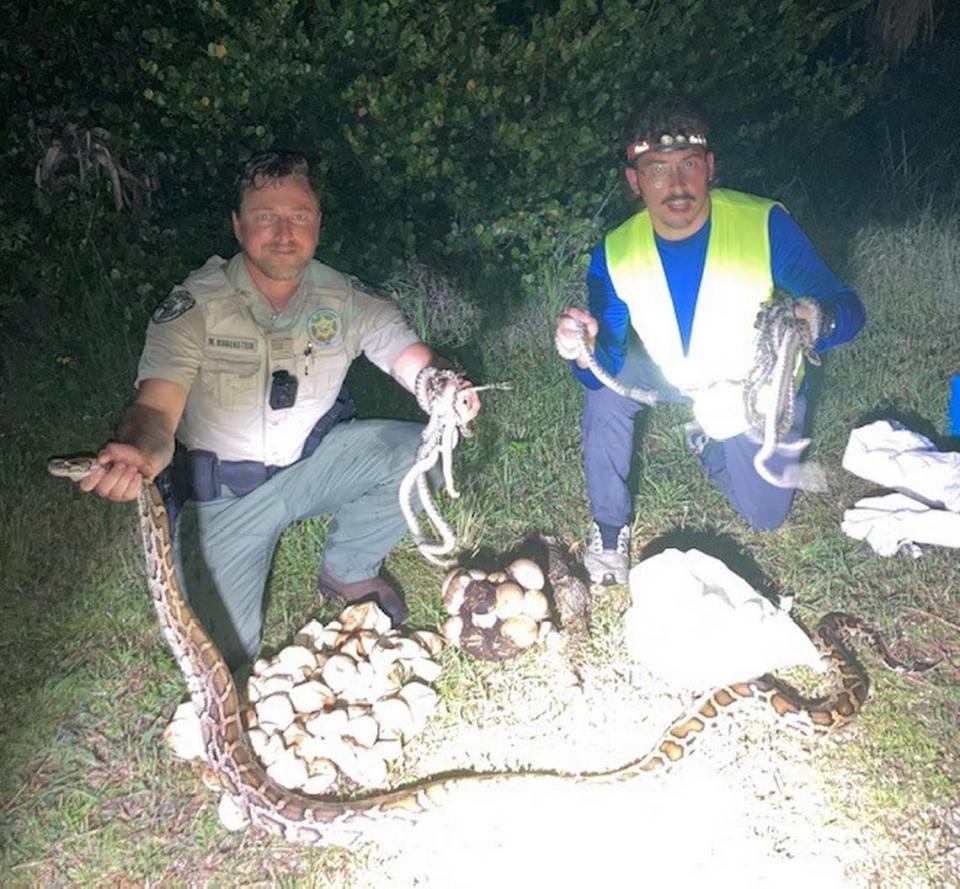Two huge pythons and lots of baby invasive snakes found in Big Cypress
A state wildlife officer and a contracted snake trapper found two large female Burmese pythons, lots of hatched and unhatched eggs and and a considerable number of the baby invasive reptiles within Big Cypress National Preserve in Collier County earlier this week.
One of the snakes was 17.6 feet long, about a foot shy of the record-breaker caught last year. The other was a 10-footer. Both were hanging around active nests.
“It’s something I’ve been dreaming about for a while now. It’s pretty surreal,” said 23-year-old Alex McDuffie, a snake trapper working for the South Florida Water Management District.
At around 10:30 p.m. Monday, McDuffie along with his volunteer assistant and Florida Fish and Wildlife Conservation Commission Officer Matthew Rubenstein searched the area for snakes after McDuffie found a hatchling.
“Before long, the two of them found 18 more live hatchlings. Officer Rubenstein continued his search and located a mulch pile that contained a female Burmese python on a nest,” FWC spokesman Officer Jason Rafter said. “She was sitting on 23 unhatched eggs.”

Rubenstein and McDuffie found a total of 18 recently hatched pythons, Rafter said.
Just feet away, there was another nest with 74 recently hatched eggs. The next night, McDuffie went back to that location with his assistant. About 500 yards away, he saw something large moving that turned out to be the mother of the unhatched snakes.
“It’s really cool to see two nesting snakes next to each other that for the last 60 days were incubating their eggs, basically together,” McDuffie said.
McDuffie, his assistant and three other snake trappers who were already in the area jumped on the python. After quite a struggle, they were finally able to capture it.
“It took all five of us,” McDuffie said. “I’ve never been humbled by a snake like that. It was pretty cool.”
Since being introduced into the South Florida habitat decades ago — likely through the exotic pet trade — Burmese pythons have taken to the tropical environment and their numbers have multiplied. Since they have no natural predators in the area, they have disrupted the predator/prey balance in the Everglades and elsewhere.

They prey on birds, mammals and other reptiles native to South Florida. A female Burmese python can lay 50 to 100 eggs at a time. Since 2000, more than 13,000 Burmese pythons have been removed from the state, according to the FWC.
Wildlife officials estimate the Burmese python population in Florida could be as high as 300,000 snakes, and they want them eliminated, enlisting hundreds of volunteers every year to hunt and kill them.
The eggs collected this week were turned over to the Big Cypress Python Research Program. The adults will be “humanely euthanized,” McDuffie said.

